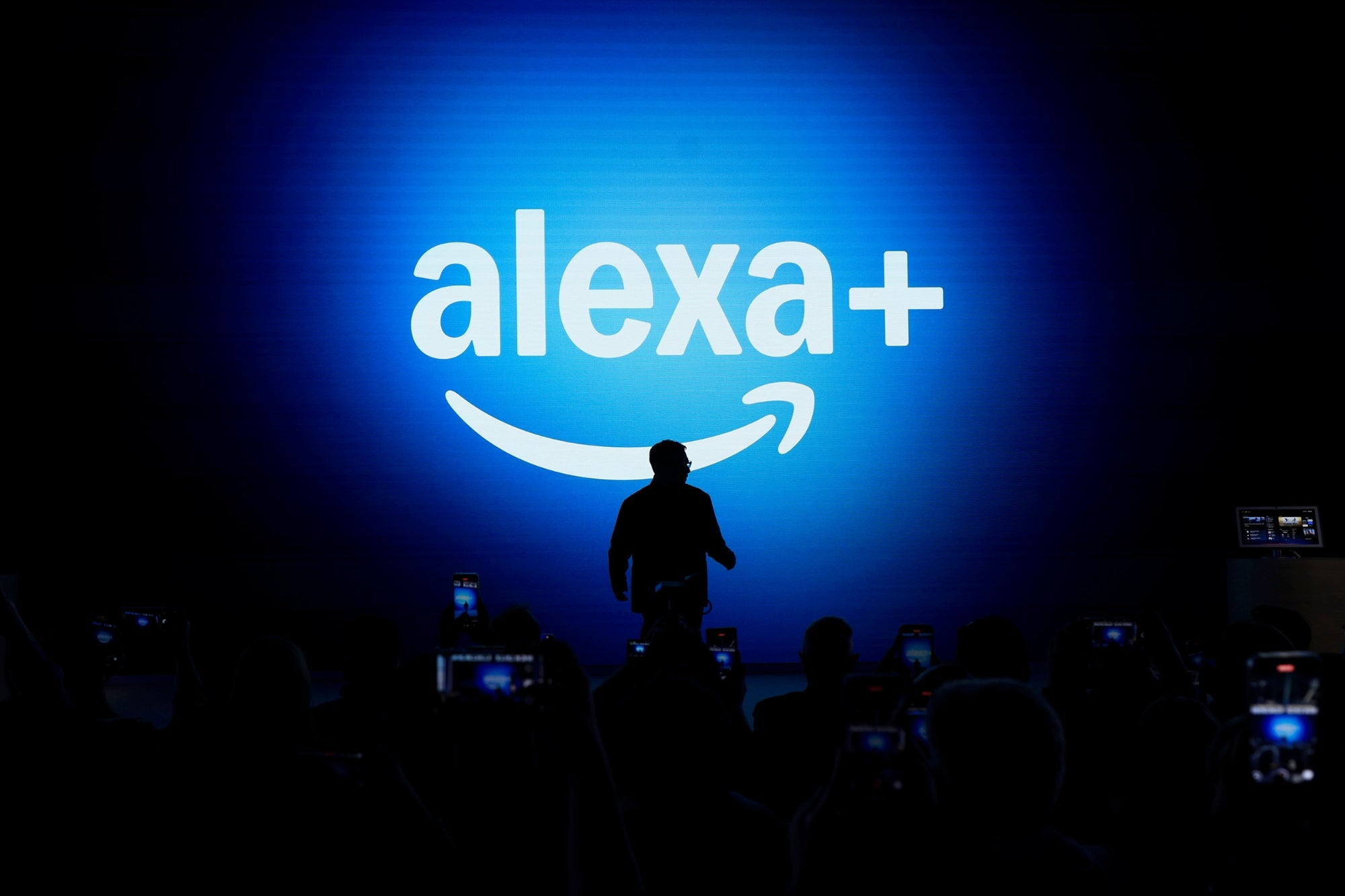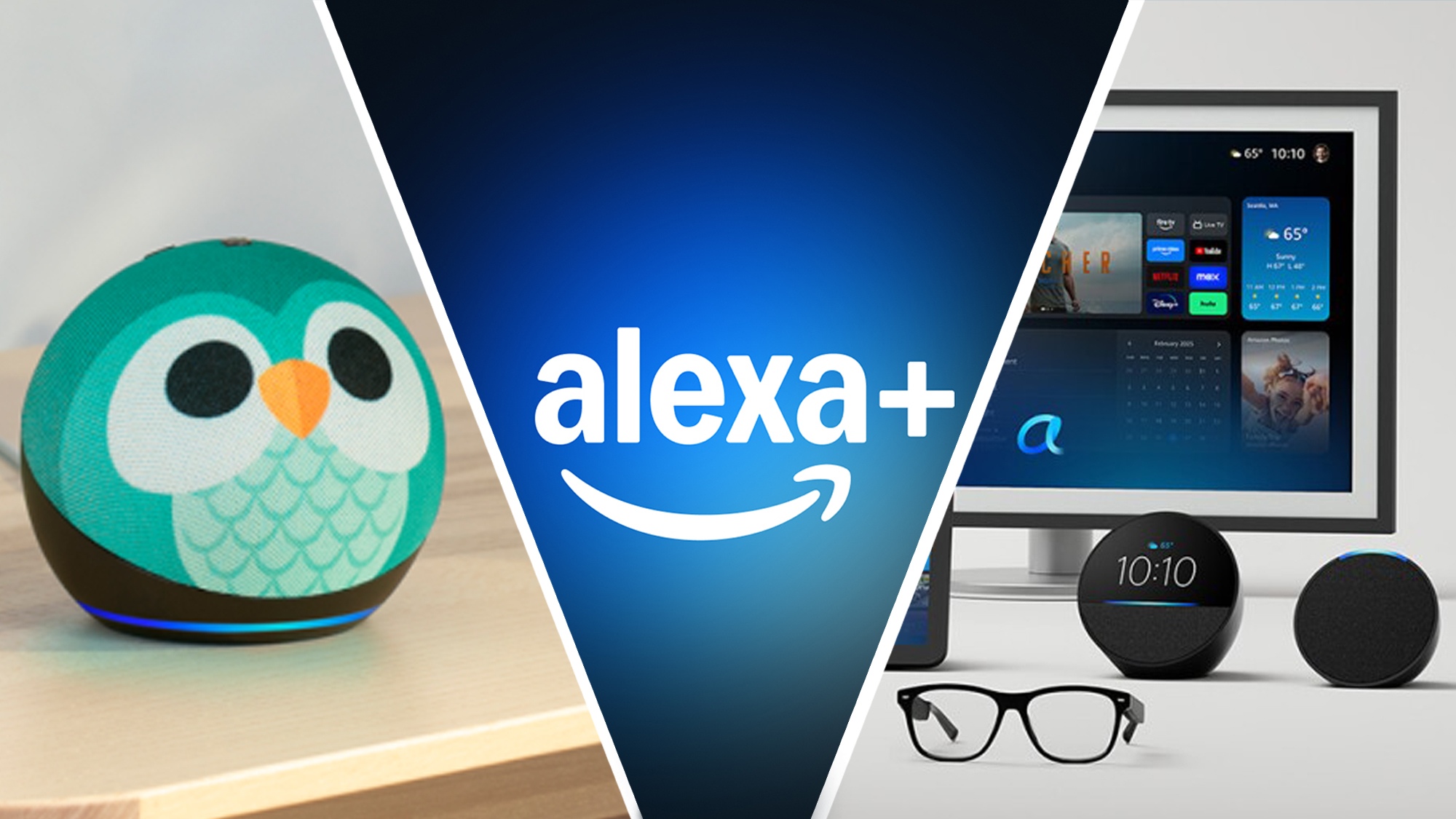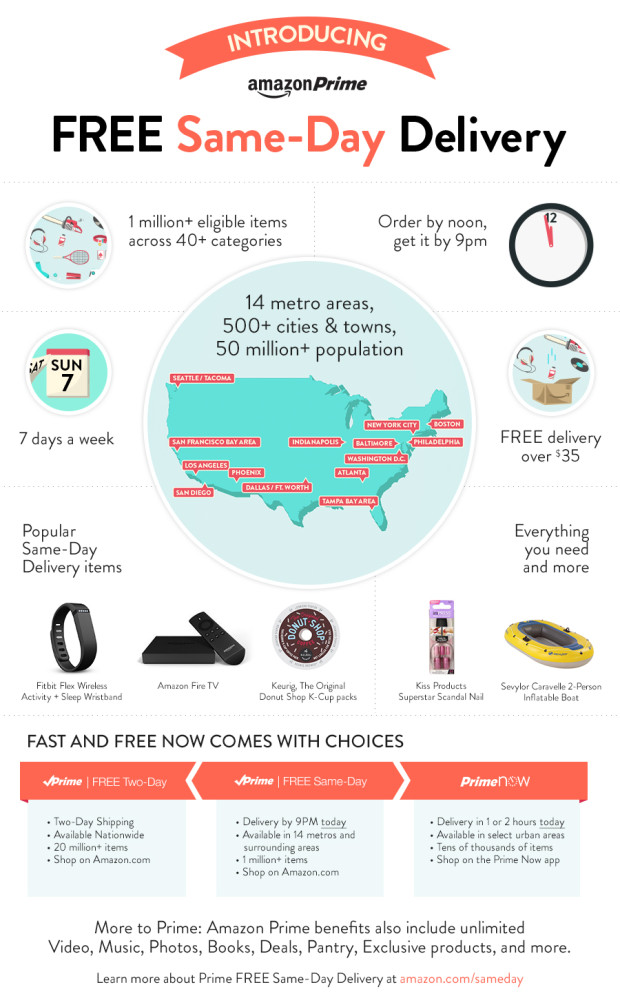In an intriguing move for the digital advertising landscape, Amazon is set to explore Alexa+ advertisements during user interactions with its advanced digital assistant. This new capability, currently available in early access in the U.S., aims to leverage the enhanced functionality of Amazon Alexa+ to deliver targeted ads while users engage with the voice-activated service. CEO Andy Jassy highlighted that these advertisements could significantly enrich the user experience, especially for shoppers using Alexa+ features, fostering seamless product discoveries. With the potential to generate additional revenue while providing personalized recommendations, Alexa+ advertisements could stand as a game-changer for Amazon Prime subscribers and Echo Show users alike. As conversations with Alexa evolve, the line between informative dialogue and digital commercials may blur, raising questions about user comfort and trust.
As Amazon embarks on integrating ad experiences into its next-gen digital assistant, the implications for Echo Show advertisements and potential revenue generation come into sharper focus. The concept of targeted promotions during voice interactions signifies a leap in how smart home devices could influence consumer behavior. By tapping into the personalized nature of user engagement, the Alexa+ interface might redefine digital assistant ads not merely as interruptions but as integral, helpful suggestions for users. This approach could expand content offerings for Amazon Prime users while also initiating new subscription tiers for an uninterrupted experience. With Alexa+ set to make its mark across various devices, understanding the balance between user convenience and ad exposure will be essential in shaping the future of digital assistant marketing.
The Future of Advertising with Alexa+
Amazon’s foray into integrating advertisements with Alexa+ represents a significant evolution in digital advertising strategies. The CEO, Andy Jassy, highlighted the potential of using conversational interfaces not merely as tools for assistance but as platforms for targeted marketing. As consumers engage in more extensive dialogues with Alexa+, the assistant can gather valuable information about their preferences and preferences, allowing for tailored advertising experiences. This shift could redefine how brands connect with consumers, particularly through the convenience of voice-assisted technology.
Moreover, Jassy’s vision of leveraging Alexa+ as a revenue-driving tool through ads aligns with a larger trend in digital marketing, where personalization is key. With the integration of Amazon Prime subscriptions enabling access to Alexa+, users are likely to encounter ads that complement their shopping habits and inquiries. This model not only stands to enhance brand visibility but could also pave the way for innovative advertising formats within the realm of voice-activated digital assistants.
Alexa+ Features and the User Experience
The enhancements in Alexa+ are meticulously designed to improve user interaction and satisfaction. By introducing features that allow for dynamic conversations, Amazon is setting a foundation for a more engaging user experience. The ability to facilitate inquiries and provide comprehensive responses can elevate the essence of voice interaction, making users feel more connected and understood by their digital assistant. With features that support continuity in multi-turn dialogues, Alexa+ becomes not just a tool but a companion in the user’s daily life.
However, as Amazon incorporates advertisement functionality into these interactions, it’s vital to maintain a balance to ensure that the user experience is not compromised. While advertisements can lead to faster purchasing decisions, excessive intrusiveness may lead to user dissatisfaction. Striking a balance between utility and advertising will be essential, as users grow accustomed to the Alexa+ features and how these ads impact their experience with the device.
Integrating Advertisements in Echo Show Experiences
The Echo Show line-up, known for its visual interface, seems poised to be at the forefront of Amazon’s advertising strategy with Alexa+. The potential for visual ads during conversations opens up novel avenues for brands to showcase their products directly to consumers. Whether it’s a promotional video or a pop-up ad highlighting special offers, these visual elements could enhance user engagement with targeted messaging tailored to their interests.
Amazon’s plan to introduce advertisements within the Echo Show experience is not without its challenges. While visual ads can enrich the interaction, they must be carefully curated to avoid overwhelming the user. A thoughtful approach that prioritizes relevant content can create an enjoyable shopping environment where consumers feel catered to, rather than bombarded. This careful curation will be key in fostering a trustworthy relationship between users and the Alexa+ platform, ensuring they remain loyal despite the integration of ads.
Amazon Prime Subscription and Alexa+ Access
With the rollout of Alexa+, the relationship between the service and Amazon Prime subscriptions is more significant than ever. By tying Alexa+’s features to a Prime membership, Amazon not only elevates the value of its streaming service but also encourages users to engage more fully with the ecosystem. This strategic pairing highlights the attractiveness of having access to advanced digital assistant features without additional costs, appealing to loyal Prime subscribers who already indulge in Amazon’s services.
However, as users grow accustomed to new Alexa+ functionalities, the potential introduction of tiered subscription options could prompt discussions about premium services. Users may find themselves at a crossroads between enhanced experiences against their desire for fewer advertisements. Like the model used for Prime Video, an ad-free option for Alexa+ could cater to those seeking uninterrupted interaction, thus providing opportunities for revenue streams on both ends of the subscription spectrum.
Potential for Multi-Turn Conversations in Advertising
Multi-turn conversations represent a budding frontier in customer engagement, and Amazon is keen to harness this potential for advertising with Alexa+. As users delve into longer dialogues, the assistant can dynamically integrate suggested products or services seamlessly into conversations, thus enhancing the user’s discovery process. This conversational advertising could provide contextually relevant offers, making it feel less like an interruption and more like an enhancement to the conversation.
Jassy’s belief that these ads could drive revenue while elevating user experiences underscores the importance of strategic dialogue management. For instance, if a user discusses kitchen upgrades, Alexa+ might suggest compatible appliances or accessories, thereby integrating promotional content naturally. This thoughtful integration could see advertising morph from a passive encounter into an active part of the user’s journey, ultimately benefitting both users and advertisers alike.
Diversifying Echo Device Advertising Strategies
As Amazon expands Alexa+ across various Echo devices like the Echo Show 8, 10, and beyond, the scope for advertising also diversifies. Each device serves different purposes within the home, allowing Amazon to tailor ad experiences based on user behavior and device interaction styles. For instance, visual ads on the Echo Show could promote family-oriented products during mealtimes, while audio cues on other Alexa-powered speakers could focus on personal recommendations based on voice interaction history.
This device-specific advertising strategy not only enhances user engagement with relevant products but also stands to maximize ad efficiency. By analyzing device usage patterns, Amazon can refine ad targeting, ensuring that customers receive advertisements that resonate with their unique lifestyles. This strategic approach can bolster ad retention rates and create a more personalized ecosystem where users feel that their needs and preferences are prioritized.
Challenges of Implementing Ads with Conversational Interactions
While the push for ad integration with Alexa+ presents numerous opportunities, it also brings significant challenges that Amazon must navigate. The risk of intruding upon the user’s conversational experience with unsolicited ads could erode user trust in the Alexa ecosystem. Therefore, it’s paramount for Amazon to engineer an advertising model that respects user engagement and seamlessly weaves promotional content into conversations without detracting from the interaction.
Listening to user feedback and continuously refining the approach based on their experiences will be crucial. Amazon’s commitment to maintaining a positive user experience while incorporating advertisements can determine the overall success of this initiative. Should users feel overwhelmed by ads or perceive them as irrelevant, it could lead to dissatisfaction and ultimately impact the adoption rates of Alexa+.
Gathering Insights from Alexa+ Interactions with Ads
As Amazon embarks on introducing advertisements within Alexa+ interactions, the potential to gather insights is expansive. Each interaction where ads are presented can serve as valuable data, helping Amazon understand consumer behavior and preferences more intimately. This information can be utilized to fine-tune advertising strategies not only within Alexa+ but across the entire ecosystem of Amazon’s services.
The use of machine learning algorithms can further enhance the efficacy of ad targeting through repeated interactions. By analyzing user responses and adjusting ad content accordingly, Amazon can create a robust advertising platform where users feel more in control and catered to. As these insights evolve, Amazon could establish a benchmark for how conversational advertising is implemented across other digital assistants, positioning Alexa+ as a leader in this innovative field.
Trust and Consumer Relationships with Alexa+ Advertising
Building trust while implementing advertising through Alexa+ is essential for Amazon’s long-term success. Users need to feel assured that their privacy is maintained and that their conversations are not being exploited for unwanted advertising purposes. Therefore, Amazon must be transparent about its data usage practices and clearly communicate how advertisements will be presented in conversations.
To foster a healthier consumer relationship, the company could consider options for users to customize their advertising experiences. Allowing users to select their ad preferences, or even adopting an opt-in approach, could lead to greater acceptance of ads within conversations. Ultimately, prioritizing user trust and fostering a reciprocal relationship is vital to ensuring that Alexa+ remains a beloved and integral part of daily life.
Frequently Asked Questions
What are Alexa+ advertisements and how will they work?
Alexa+ advertisements refer to the new advertising features being integrated into Amazon’s digital assistant, Alexa+. These ads aim to support users during multi-turn conversations, enhancing their shopping experiences by suggesting products or services relevant to their queries. As users engage with Alexa+, the assistant may present contextual ads that assist in the discovery process, potentially driving revenue for Amazon.
Will Alexa+ advertisements be available to all users?
Yes, Alexa+ advertisements will be accessible to users with an Amazon Prime subscription or those paying for the Alexa+ service at $20 a month. As Amazon rolls out Alexa+ to millions of testers, users can expect ads during interactions on compatible devices such as Echo Show.
How does Alexa+ aim to improve the shopping experience with advertisements?
With Alexa+ advertisements, the intent is to make shopping more interactive and personalized. By leveraging data from conversations, Alexa+ can present tailored ads that align with users’ interests and needs, ultimately enhancing the shopping experience by suggesting relevant items during their interactions.
Are there plans for an ad-free experience with Alexa+?
Amazon’s CEO, Andy Jassy, hinted at potential new tiers for Alexa+, which may include an ad-free experience for an additional fee, similar to the structure of Prime Video. This would allow users to enjoy Alexa+ without interruptions from advertisements if they choose to pay extra.
Which devices will support Alexa+ advertisements?
Initially, Alexa+ advertisements will be available on Echo Show devices, specifically the Echo Show 8, 10, 15, and 21. However, Amazon plans to expand this feature to other Echo speakers, Fire TV, Fire tablets, the Alexa app, and the web in the future.
How might Alexa+ advertisements impact user trust?
While Alexa+ advertisements aim to enhance user experience, the introduction of ads during personal conversations raises concerns about user trust. If not managed carefully, intrusive ads could undermine the perceived value of Alexa+ as a trusted assistant. Amazon will need to ensure that advertisements are relevant and non-disruptive to maintain user confidence.
What differentiates Alexa+ from the original Alexa in terms of advertisements?
Alexa+ offers a more advanced interactive and conversational model than the original Alexa, with enhanced capabilities for showing advertisements. These conversational ads are designed to engage users more deeply during discussions, whereas the original Alexa mainly provided visual ads on Echo Show devices without deep contextual integration during conversations.
Are Alexa+ ads expected to generate significant revenue for Amazon?
Yes, Amazon anticipates that Alexa+ advertisements will be a significant revenue stream, as they can leverage the high engagement rates of users interacting with Alexa+. By integrating these ads into the shopping process, Amazon aims to capitalize on the delightful shopping experiences that Alexa+ offers.
Will existing Alexa users need to switch to Alexa+ for advertisements?
Existing Alexa users will not need to switch to Alexa+ if they prefer to avoid advertisements. The original Alexa will remain available for those who wish to continue using it without the new ad features introduced in Alexa+.
What are the potential risks associated with Alexa+ advertisements?
The primary risks associated with Alexa+ advertisements include user discomfort and a possible decline in trust if ads are perceived as intrusive or irrelevant. Additionally, concerns about data privacy and the use of personal conversations for targeted advertising could affect user perception of the Alexa+ experience.
| Key Point | Details |
|---|---|
| Introduction of Ads | Amazon is considering introducing advertisements in conversations with Alexa+, its new digital assistant. |
| CEO Statement | Andy Jassy mentioned ads could enhance Alexa+’s utility and generate additional revenue. |
| User Experience | Amazon aims for a delightful shopping experience with Alexa+, integrating ads as part of the discovery process. |
| Subscription Model | Alexa+ will be free with Amazon Prime or available for $20 a month with potential ad-free options. |
| Ad Formats | Current interactions on Echo Show devices may include visual ads, with conversational ads anticipated to be more pervasive. |
| User Trust Issues | Using personal conversations for targeted ads may undermine user trust in the product. |
| Expansion Plans | Alexa+ is currently in testing with millions in the U.S., expanding to various devices beyond Echo Show. |
| Original Alexa Availability | The original Alexa will still be available for users who prefer it. |
Summary
Alexa+ advertisements are set to become a significant aspect of Amazon’s strategy, as the company looks to enhance user interaction and generate revenue. The integration of ads within conversational interfaces may provide a new revenue stream while striving to maintain an enjoyable user experience. As Amazon rolls out Alexa+ to millions of users, the balance between advertising and trust will be crucial for its success.









